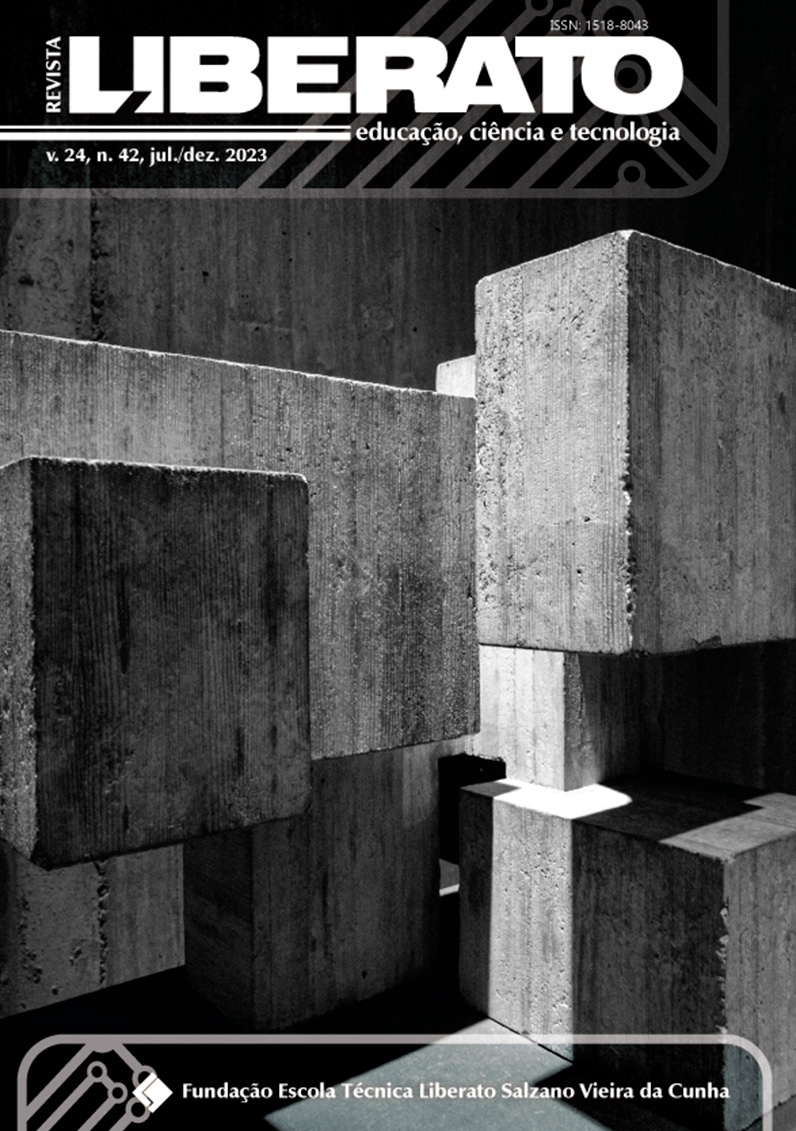Mecanismos de dor nas espondiloartrites e a relação com o desempenho cognitivo
Resumo
Este estudo teve como objetivo principal investigar a relação entre os mecanismos de dor, através do estudo da resposta do sistema modulador descendente. O estudo foi realizado com o paradigma da Modulação da Dor Condicionada (CPM) e verificada sua relação com o desempenho cognitivo em 17 pacientes, com perturbação da coluna vertebral (espondioartrites), que é um grupo de doenças inflamatórias reumáticas que causam dores, comprometendo a qualidade de vida dos indivíduos. Foi avaliada uma amostra desses doentes, com elevada atividade e repercussão funcional que apresentaram déficits cognitivos e marcada perturbação da qualidade do sono, assim como as vias descendentes da dor (vias inibitórias produtoras de analgesia no cérebro, comprometidas). Esses indivíduos apresentaram sérios problemas físicos e psicológicos e sua saúde mental ficou comprometida, em alguns casos.Referências
ALMEIDA, D. C.; KRAYCHETE, D. C. Low back pain: a diagnostic approach. Revista Dor, v. 18, n. 2, p. 173-177, 2017. DOI:10.5935/1806-0013.20170034.
ALSAADI, S. M. et al. Prevalence of sleep disturbance in patients with low back pain. European Spine Journal, v. 20, n. 5, p. 737-743, 2012. DOI: 10.1007/s00586-010-1661-x.
AMADOR CAMPOS, J. A. Escala de inteligência de Wechsler para adultos-IV (WAIS-IV). Barcelona, 2013.
AXÉN, I. Pain-related sleep disturbance. The Clinical Journal of Pain, v. 32, n. 3, p. 254-259, 2016. DOI: 10.1097/AJP.0000000000000249.
BAKER, K. S. et al. Optimizing cognitive function in persons with chronic pain. The Clinical Journal of Pain, v. 33, n. 5, p. 462-472, 2017. DOI: 10.1097/AJP.0000000000000423.
BALIKI, M. N.; APKARIAN, A. V. Nociception, pain, negative moods and behavior selection. Neuron, v. 87, n. 3, p. 474-491, 2015. DOI: 10.1016/j.neuron.2015.06.005.
BRIDGESTOCK, C.; RAE, C. P. Anatomy, physiology and pharmacology of pain. Anaesthesia and Intensive Care Medicine, v. 14, p. 12-15, 2013.
CARPENTER, J. S.; ANDRYKOWSKI, M. A. Psychometric evaluation of the pittsburgh sleep quality index. Journal of Psychosomatic Research, v. 45, n. 1, p. 5-13, 1998. DOI: 10.1016/s0022-3999(97)00298-5.
CAVACO, S. et al. Semantic fluency and phonemic fluency: regression-based norms for the portuguese population. Archives of Clinical Neuropsychology, v. 28, n. 3, p. 262-271, 2013. DOI: 0.1093/arclin/act001.
COLUCCIA, D. et al. Glucocorticoid therapy-induced memory deficits: acute versus chronic effects. Journal of Neuroscience, v. 28, n. 13, p. 3474-3478, 2008. DOI: 10.1523/JNEUROSCI.4893-07.2008.
DEL, R. J. et al. Validation of the portuguese version of The Pittsburgh Sleep Quality Index (PSQI-PT). Psychiatry Research, v. 247, p. 225-229, 2017. DOI: 10.1016/j.psychres.2016.11.042.
ECCLESTON, C.; CROMBEZ, G. Pain demands attention: a cognitive-affective model of the interruptive function of pain. Psychological Bulletin, v. 125, n. 3, p. 356-366, 1999. DOI: 10.1037/0033-2909.125.3.356.
FERNANDES, S. Stroop: teste de cores e palavras. [Adaptado da obra de] Charles J. Golden e Shawna M. Freshwater. Lisboa: CEGOC-TEA, 2013.
GRABOVAC, I. et al. Sleep quality in patients with rheumatoid arthritis and associations with pain, disability, disease ruration and activity. Journal of Clinical Medicine, v. 7, n. 10, 2018. DOI: 10.3390/jcm7100336.
GUEVARA, C. M. L. et al. Executive function impairments in fibromyalgia syndrome: relevance of clinical variables and body mass index. PLoS ONE, v. 13, n. 4, 2018. DOI: 10.1371/journal.pone.0196329.
IBM. SPSS Statistics for Windows. 2016. Disponível em: https://www.ibm.com/support/pages/spss-statistics-210-available-download. Acesso em: 14 out. 2020.
KILTZ, U. et al. Measurement properties of the ASAS Health Index: results of a global study in patients with axial and peripheral spondyloarthritis. Annals of the Rheumatic Diseases, v. 77, n. 9, p. 1311-1317, 2018. DOI: 10.1136/annrheumdis-2017-212076.
KUMAR, P. S. Utilization of Brief Pain Inventory as an assessment tool for pain in patients with cancer: a focused review. Indian Journal of Palliative Care, v. 17, n. 2, p. 108-115, 2011. DOI: 10.4103/0973-1075.84531.
LEDFORD, C. Spine conditions: mechanical and inflammatory low back pain. FP Essentials, n. 461, p. 15-20, 2017.
LEE, Y. C.; NASSIKAS, N. J.; CLAUW, D. J. The role of the central nervous system in the generation and maintenance of chronic pain in rheumatoid arthritis, osteoarthritis, and fibromyalgia. Arthritis Research and Therapy, v. 13, n. 2, 2011. DOI: 10.1007/s11926-012-0285-z.
MCINTYRE, M. T. et al. Escala de ansiedade e depressão hospitalar: versão portuguesa de investigação. Braga: Departamento de Psicologia, Universidade do Minho, 1999. Disponível em: http://www.reuma.pt/docs/HADS_PT.pdf. Acesso em: 15 maio 2020.
MELZACK, R. From the gate to the neuromatrix. Pain, v. 82, p. 121-126, 1999. Suplemento 1. DOI: 10.1016/S0304-3959(99)00145-1.
MELZACK, R.; WALL, P. D. Pain mechanisms: a new theory. Science, v. 150, n. 3699, p. 971-979, 1965. DOI: 10.1126/science.150.3699.971.
MORIARTY, O.; FINN, D. P. Cognition and pain. Current Opinion in Supportive and Palliative Care, v. 8, n. 2, p 130-136, 2014. DOI: 10.1097/SPC.0000000000000054.
MORIARTY, O.; MCGUIRE, B. E.; FINN, D. P. The effect of pain on cognitive function: a review of clinical and preclinical research. Progress in Neurobiology, v. 93, n. 3, p. 385-404, 2011. DOI: 10.1016/j.pneurobio.2011.01.002.
MEDOC. Q-Sense. 2020. Disponível em: https://www.medoc-web.com/q-sense. Acesso em: 26 mar. 2020.
ORGANIZAÇÃO MUNDIAL DA SAÚDE. Musculoskeletal health. 2018. Disponível em: https://www.who.int/news-room/fact-sheets/detail/musculoskeletal-conditions. Acesso em: 13 abr. 2020.
SANTOS, F. P. et al. Metrologia nas espondilartrites. Lisboa, 2019. 185 p.
SANTOS, F. P. et al. Spectrum of ankylosing spondylitis in Portugal. Development of BASDAI, BASFI, BASMI and mSASSS reference centile charts. Clinical Rheumatology, v. 31, n. 3, p. 447-454, 2012. DOI: 10.1007/s10067-011-1854-7.
SIEPER, J. et al. The Assessment of SpondyloArthritis international Society (ASAS) handbook: a guide to assess spondyloarthritis. Annals of the Rheumatic Diseases, v. 68, p. 1-44, 2009. Suplemento 2. DOI: 10.1136/ard.2008.104018
SRINIVASA, N. R. et al. Definição revisada de dor pela Associação Internacional para o Estudo da Dor: conceitos, desafios e compromissos. 2020. Disponível em: https://sbed.org.br/wp-content/uploads/2020/08/Defini%C3%A7%C3%A3o-revisada-de-dor_3.pdf. Acesso em: 22 abr. 2020.
STROOP, J. R. Studies of interference in serial verbal reactions. Journal of Experimental Psychology, v. 18, n. 6, p. 643-662, 1935. DOI: 10.1037/h0054651.
VITTURI, B. K. et. al. Cognitive impairment in patients with ankylosing spondylitis. Canadian Journal of Neurological Sciences, n. 47, n. 2, p. 219-225, 2020. DOI: 10.1017/cjn.2020.14.
WAGNER INSTRUMENTS. Pain test algometers. 2020. Disponível em: https://www.wagnerinstruments.com/products/PAIN-TEST-Algometers. Acesso em: 22 abr. 2020.
WARE, J. E.; SHERBOURNE, C. D. The MOS 36-item short-form health survey (Sf-36): I. conceptual framework and item selection. Medical Care, v. 30, n. 6, p. 473-83, 1992.
WOLFE, F.; MICHAUD, K.; LI, T. Sleep disturbance in patients with rheumatoid arthritis: evaluation by medical outcomes study and visual analog sleep scales. Journal of Rheumatology, v. 33, n. 10, p. 1942-1951, 2006.
WOOLF, C. J.; SALTER, M. W. Neuronal plasticity: increasing the gain in pain. Science, v. 288, n. 1765, p. 1765-1768, 2000. DOI: 10.1126/science.288.5472.1765.
Downloads
Publicado
Como Citar
Edição
Seção
Licença

Este trabalho está licenciado sob uma licença Creative Commons Attribution 4.0 International License.
Declaração de Cessão de Direitos Autorais
, ____ de _____________ de 2021.
Senhora Editora:
Eu/Nós, XXXXX, declaro/ declaramos que o artigo intitulado XXXXXX, submetido à publicação à Revista Liberato é original e de minha/nossa autoria e que as fontes citadas foram explicitadas no corpo do trabalho e nas referências.
Salientamos ainda que seu conteúdo não foi enviado para publicação em outras revistas, seja em formato impresso ou eletrônico, reservados os direitos autorais para a Revista Liberato (Versão Impressa) – ISSN 1518-8043 e Revista Liberato (Versão Online) – ISSN 2178-8820.
Com esta declaração, concedo/cedemos todos os direitos de divulgação do texto - por mídia impressa, eletrônica ou outra qualquer - à Revista Liberato e à Fundação Escola Técnica Liberato Salzano Vieira da Cunha.
Certificando minha/nossa responsabilidade pelo conteúdo apresentado, subscrevo-me/nos atenciosamente.
Nome (s) do Autor (s) Assinatura



